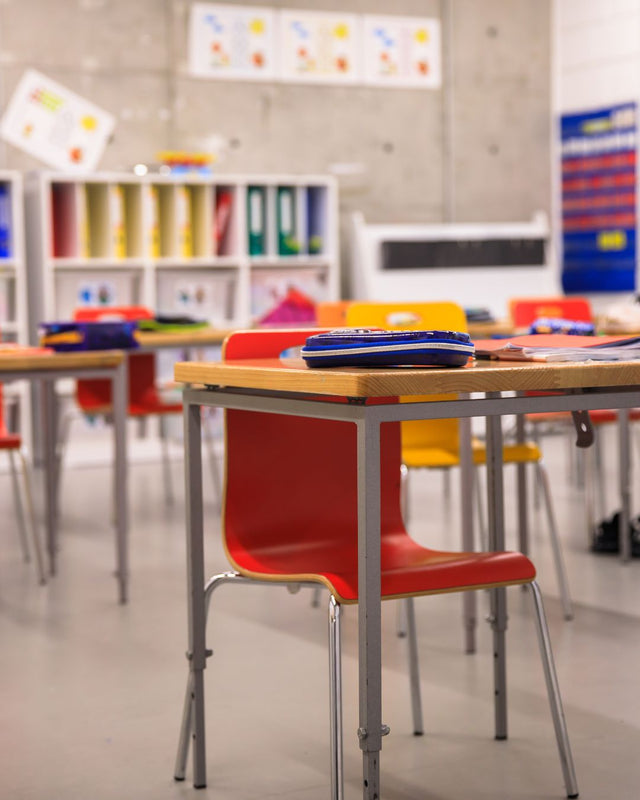Managing School Days with Type One Diabetes
School, can you believe it, is almost upon us. Every year, this time of year, when sunsets get earlier and sunrises later, and I get a glimpse of the occasional maple tree changing colour, I think,”too soon”. Summer, it seems, never seems long enough and soon everyone will have their own demanding schedules, and we will all see less of each other at home.
Back to School with T1D is not Easy.
Back to school, means back to routine, and requires extra planning and prep. This is especially true for those of us with kids with T1D (heart in throat). Once again, we will be handing off responsibility for our child’s medical needs to someone else. With T1D there is just so much more to think about than just making sure lunches are made and papers are signed before they head out the door.
For us d-moms and d-dads, back to school can mean checking the CGM app on your phone a hundred times per day, anxiously waiting for that low blood glucose to rise, stopping everything to watch the drama of that curve, feeling heart in your throat. It can mean running to the school and into the office like a crazy person because the low blood sugar has now turned dangerous and no one responded to my crazed texts. It can mean learning to speak up strongly for our kids, because we know it is a matter of life and death. I’ve learned to educate strangers, and professionals and those who I felt needed to know all about diabetes because it would help my child be safe, and understood at school, at the real risk of them thinking I’m an annoying helicopter mom.
For you who are just starting this journey with T1D, I just want you to know that it does get better. You will be less anxious, and you will learn to make diabetes prep a part of your life. But, I also want to say that it will never be EASY. With diabetes, there seems to be always something and any one time, that keeps things interesting and off-balance. Don’t expect easy, and never expect perfection. Doing either is a sure way to go crazy.
Some Helpful Tips for Back to School Planning with T1D
Here are some tips that may make the transition to school easier this year. I’m sure you have some good ones too, so please feel free to leave a comment below so we can all learn from each other.
Tip 1: Find a d-buddy.
Knowing another T1D family and being able to support each other can be an amazing experience. Personally, we know at least two other families with whom we have become very close friends. When no one else understands what it is like, it is so amazing to be able to feel that connection. Even if you have different views of how to manage diabetes, it is always great to know there is someone who can lend you a helping hand when you need it or a shoulder to cry on. It’s even better if your kids hit it off, and they too have someone they can talk to who ‘gets it’. If you know someone in person, online groups (e.g. FB groups) can act as a second best. Programs like ICD or diabetes summer camps can serve as amazing ways to make connections with other T1D families. For a few years, my husband and I would go for coffee with one or two other T1D families on the first day of school because it was better to be together as basket cases than be alone.
A dynamic list of Useful links for T1D families can be found in this blog post.
Tip 1: Talk to your child’s principal and teacher before school starts.
I know a mom and dad who do this every year and it really helps to communicate with those folks who will be responsible for your child’s wellbeing at school. If it is the first time at school with diabetes, you will need to sit down with the principal and vice principal to discuss what will go into the child’s Individual Care Plan (ICP) in Canada. This document is a legal, binding document that outlines the procedures of care in case of different scenarios (e.g. what happens when the child has a low, do they require a nurse to administer insulin, where will they give insulin, etc.). The following sites can also be helpful resources for teachers and caregivers when considering the ICP.
https://breakthrought1d.ca/back-to-school-with-type-1-diabetes-t1d/
Tip 2: Meet with the School Nurse ahead of time.
If your child requires a nurse to supervise or give insulin during lunch, it is always a good idea to meet them and go over the procedure before school starts. We have had great experience with school nurses, and also not so great. It is always a good idea to ask your child how things are going with the nurse visits etc.
Tip 3: Write a letter to the Teacher
Personally, I waited to chat with the teacher after a little bit, but would write them a detailed email on the first day of school. In this email I would explain what T1D was, how it would affect my child, what to look for and how to respond in case of lows or highs. If it would help you, here is a PDF SAMPLE LETTER that I used as a template each year. You are welcome to use it as a template for your own correspondence. I found teachers were always very appreciative to get the extra information. Even though educators are required to read and follow the ICP by law, teachers are very preoccupied at the beginning of the year, and it can be missed. In our experience, most teachers have offered their text, in case of an emergency. I was always very respectful of privacy and never texted the teacher for any other reason other than for diabetes related concerns and only if my child did not respond to my desperate texts. I made sure to delete their numbers at the end of the year, and never shared their number with anyone else. Teachers are amazing, IMO, and on the most part, I’ve found they want to know how they can best support their students.
Tip 4: Pack a Labeled Supply Box.
Fill a box labeled with the student’s name and emergency contact information, with extra diabetes supplies. Store the box in the office or some other pre-arranged spot that will never be locked up or inaccessible at any time (e.g. NOT in a locked classroom). Here are some supplies that you might consider adding to the box.
Extra, rescue carbs (labelled 15g etc.)
Extra needle tips, alcohol swabs, lancets.
Pump supplies
An extra glucagon or Basqimi
An extra CGM sensor
Gucometer
Extra batteries for pump or glucometer
Extra charging code for pump or phone
Tip 5: Pack a diabetes bag that the child can have next to them in school.
This bag should be accessible and with the child at all times. It can contain an extra glucometer, low treatment (e.g. juice boxes, candy, Dextabs etc.), a phone charging cord and/or pump charging cord, extra batteries and a Glucagon or Baqsimi. During recess, if your child has zippered pockets or wears Pump Pocket, like our son did, they can also store extra treatment and/or their phone in their Pump Pocket pockets if they want to play free of a bag swinging around them while they try to play sports.
Tip 6: Connect with the Lunch Monitor and Yard Monitor.
Lunch and Recess are both times that the regular teacher is not around. Make an effort to make sure that the lunch monitor and person on duty in the yard is aware of your child’s medical needs. This person may even be a parent volunteer, so it is important that they are aware what to look for and how to respond (e.g. in case of severe hypoglycemia). If you can, also designate another point person who does not have a regular classroom, (e.g. a learning support teacher), to act as a back-up contact, that is always a bonus when your child has a low on the playground and her teacher is not nearby.
Tip 7: Establish Rules about Phones at School Right Away.
Phones in classrooms have been under a great deal of scrutiny lately and some laws have been passed to limit use of phones in the classroom and on school grounds. In my opinion, this is a good thing. However, the phones that our T1D kids have are,in fact, medical devices and MUST be accessible to them at ALL times. You would think that this concept is logical, but, with all the hype about phones, kids with T1D have been told to put their phones away, hurry up with whatever they need to do on them (bolusing) and then put them away, turn their alarms off (sorry, no will do), and not respond to their parent’s text instruction re diabetes management! Children who are less likely to advocate for themselves (you know the quiet, rule-following kind), may be subject to judgement and scrutiny, which can cause extreme stress. As a consequence they may even try to hide their diabetes in embarrassment or shame of being singled out. Instruct your kids that they must only use their phones for diabetes management. If they are singled out for using their phones when they are using it to manage their diabetes, I would take the matter up with the teacher first and if that doesn’t go anywhere, move up the chain of command.
Any more to add?
What do you do as you prepare for a new school year with T1D? Please share with the class! We can all learn from each other as we walk this path together!


0 Comments
There are no comments for this article. Be the first one to leave a message!